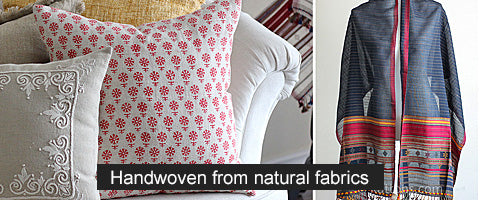Discover the World of Pashmina Cashmere: Unraveling the Secrets of Luxury
Welcome to the enchanting world of Pashmina, a symbol of luxury and elegance deeply rooted in history and fine craftsmanship. This guide is your comprehensive journey through the essence of Pashmina, from its rich heritage to the delicate art of preservation.
The Origin and Legacy of Pashmina
Pashmina has a storied past that intertwines with the culture and traditions of the Himalayan region, especially Ladakh, India. Its history spans centuries, originally adorning royalty and the elite, symbolizing status and luxury.
The Changpa nomads of Ladakh have been the custodians of this tradition, rearing the Changthangi goats (also known as the pashmina goat or cashmere goats) in harsh climates at high altitudes, from which the prized pashmina or finest cashmere wool is harvested. These semi-nomadic goat herders have been rearing the Changthangi goats, the source of authentic pashmina or finest cashmere wool, for centuries.
Pashmina vs. Traditional Cashmere: Understanding the Distinction
Pashmina stands out from other cashmere varieties in several key aspects:
Superiority in Softness: The fibres of pashmina wool are remarkably thinner than regular cashmere wool, typically measuring between 12 to 16 microns in diameter, which imparts a distinctive softness and sheen to the fabric.
Unmatched Warmth: Despite its lightweight nature, pashmina provides superior warmth, making it ideal for luxurious shawls, scarves and sweaters.
Exclusivity and Value: The intricate process of hand-spinning and weaving, coupled with the limited geographical region of production, renders Pashmina a rare and valuable commodity. This rarity is reflected in its price, making it more than just a piece of clothing – it's an investment in art and tradition.
How to Find Authentic Pashmina
- Quality Check: Authentic pashmina is incredibly soft, lightweight, and warm.
- Warmth Test: Genuine Pashmina generates warmth quickly when rubbed between hands.
- Burn Test: A small burned fibre should smell like burnt hair and turn to ash, indicating natural fibres.
- Pilling Tendency: Genuine Pashmina tends to pill with use, while synthetics do not.
- Price Point: Genuine pashmina is typically more expensive due to its rarity, quality and craftsmanship.
The Artisans' Touch: A Testament to Skill and Tradition
The creation of each pashmina piece is a labour of love and skill. Local artisans in Ladakh, especially women, are the pillars of this craft. They hand-spin yarn and weave the wool into exquisite pashmina cashmere garments, scarves, shawls, sweaters, hats, and beanies, keeping alive a tradition that not only defines their culture but also supports their livelihoods. The Pashmina industry is not just about producing luxury items; it's about sustaining the livelihoods of countless artisans in Ladakh.

Nomadic Ladakhi Changpa women hand spinning pashmina cashmere wool.
The Artisanal Process of Pashmina Making
From Fleece to Fabric: The process begins with the gentle combing of the Changthangi goats during the spring moulting season. This practice ensures the animals are not harmed and the highest quality wool is obtained.
Spinning the Wool: The collected wool is then meticulously cleaned and hand-spun. This spinning process is an art in itself, requiring skill and patience, often performed by the women of Ladakh.
Weaving Magic: The spun yarn is woven on traditional handlooms, a process that can take several days or even weeks, depending on the complexity of the design and the fineness of the weave.
Dyeing and Finishing: The woven fabric is then dyed using both traditional natural dyes and modern eco-friendly colours, followed by a series of finishing processes that enhance its softness and sheen.
Sustainability: A Core Principle of Pashmina Production
Pashmina production is not just about creating quality luxury clothing items; it's about doing so responsibly:
Eco-Friendly Practices: The entire process of Pashmina production is eco-conscious, from the sustainable rearing of the Changthangi goats to the use of natural dyes and manual labour, ensuring minimal environmental impact.
Supporting Biodiversity: The traditional grazing practices of the Changpa community help maintain the fragile ecosystem of the high Himalayas, supporting biodiversity.
Ethical Sourcing: The process respects animal welfare and promotes fair trade, supporting the economic well-being of the artisan communities.
Caring for Your Pashmina: Tips and Tricks
To ensure your pashmina scarf, shawl, or beanies remain in pristine condition, follow these top fabric care tips:
- Washing with Care: Always hand wash Pashmina in lukewarm water using a mild, pH-neutral detergent. Avoid using harsh chemicals which can damage the fibres.
- Drying Techniques: Lay the Pashmina flat on a clean, dry towel and roll it gently to remove excess water. Avoid wringing or twisting, as this can distort the shape.
- Proper Storage: Store Pashmina in a dry, cool place away from direct sunlight. Use breathable cotton bags to prevent moisture buildup and protect from dust and moths.
- Moth Prevention: Natural repellents like lavender sachets or cedar balls are effective in keeping moths away.
Embracing Pashmina in Contemporary Fashion
Today, the pashmina continues to be a coveted item in the fashion world, valued for its versatility, quality, elegance, fabric quality and the sheer luxurious experience it offers. Its soft, elegant and timeless appeal makes it a favourite across various styles and occasions.
Pashmina Cashmere is not just a fabric, accessories, or luxury gift item; it's a piece of history, a work of fine art, and a testament to sustainable fashion. Understanding its origins, the intricate process of its creation, and the importance of ethical production adds layers to its value. By properly caring for it, your pashmina cashmere items and accessories can be a soft, timeless treasure that grows softer and more precious with time.
Glimpses of Enchanting Ladakh...


Our latest pashmina collection...
Subscribe for Newsletter
The latest news, events and stories delivered right to your inbox

